Nest Temperatures
In 2017, N.E.S.T. volunteers began placing temperature data loggers in all our sea turtle nests. In 2018 we upgraded our technology to Bluetooth capable data loggers whereby N.E.S.T. volunteers could download hourly temperature data directly from the nest to their cell phones for real time data analysis. We are currently researching the best location to place the data logger (just outside the nest, in the middle of the nest, on top of the nest) to get quality data with as little disturbance to the nest as possible. Our goal is to explore how real- life nest temperatures impact incubation times, viability of embryos and hatchlings, and to assist volunteers in better management of nests.
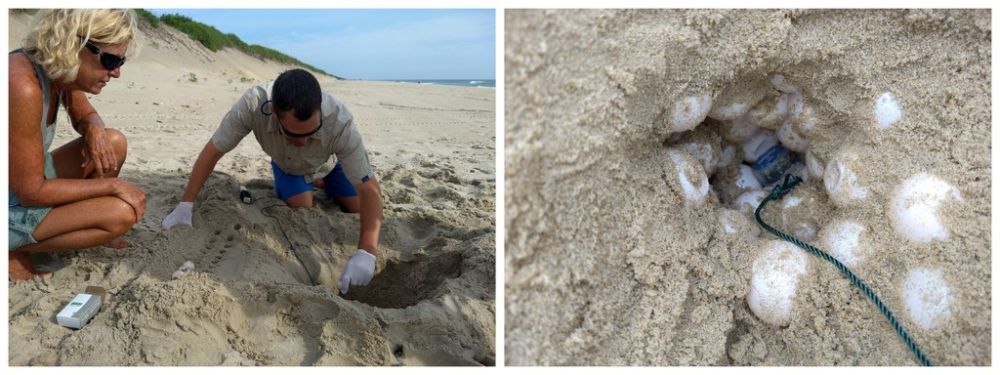
Volunteers locate 2018 Nest 5 in Corolla and place temperature datalogger in nest.
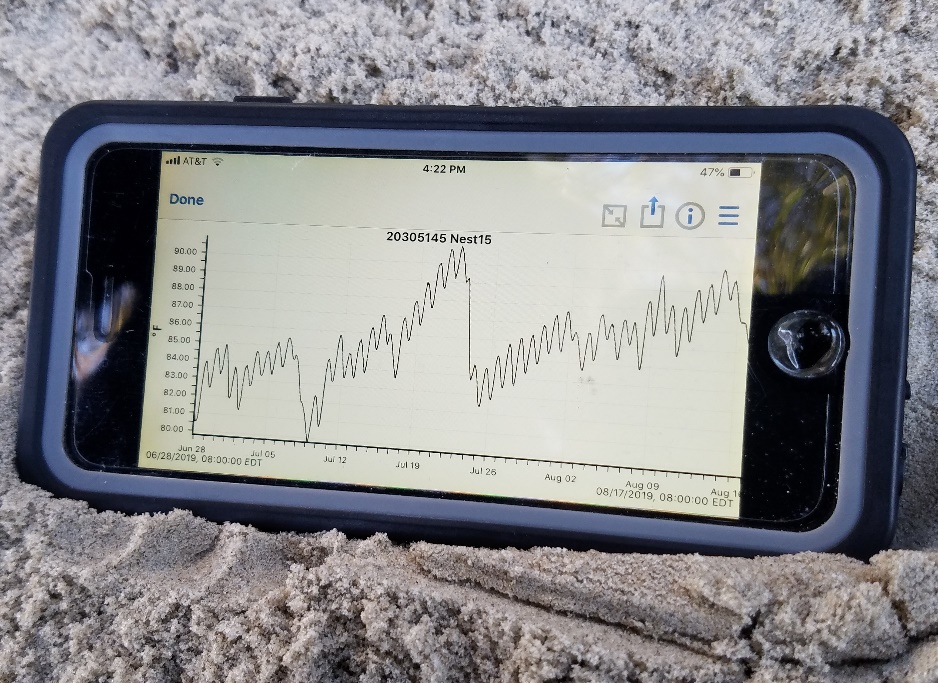
Graph of temperature data downloaded from nest
Incubation time and hatching success
Optimal nest incubation temperatures are generally around 83 to 88 degrees Fahrenheit. Although there are many factors that can go into determining the temperature of a nest (depth of the nest, type of sand, weather conditions, metabolic heating from growth of the embryos) a colder average nest temperature takes longer to incubate than a hotter nest.
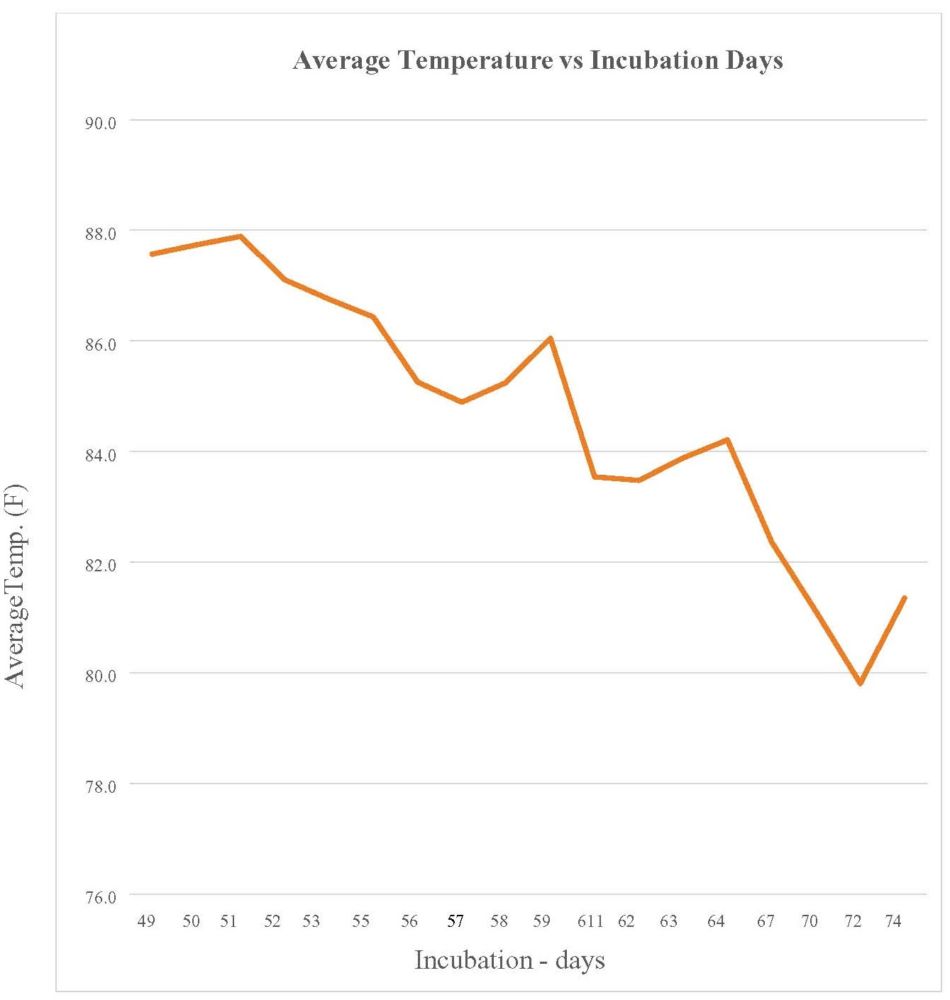
The above graph compares average nest temperature versus total incubation days for nests laid from 2019 – 2021 in the N.E.S.T. OBX area. As average nest temperature declines the number of incubation days increases.
Incubation temperatures outside the ideal range mean trouble for embryos and hatchling. Constant nest temperatures equal to or above 89 degrees Fahrenheit generally mean embryos do not hatch or hatch but do not survive. Constant nest temperatures below 75 to 77 degrees Fahrenheit generally mean embryos do not hatch.
Below is a graph estimating hatch success rate of our Northern Outer Banks nests by month for 2019 – 2021. Graph includes several nests that were unsuccessful due to predation or washout from storms
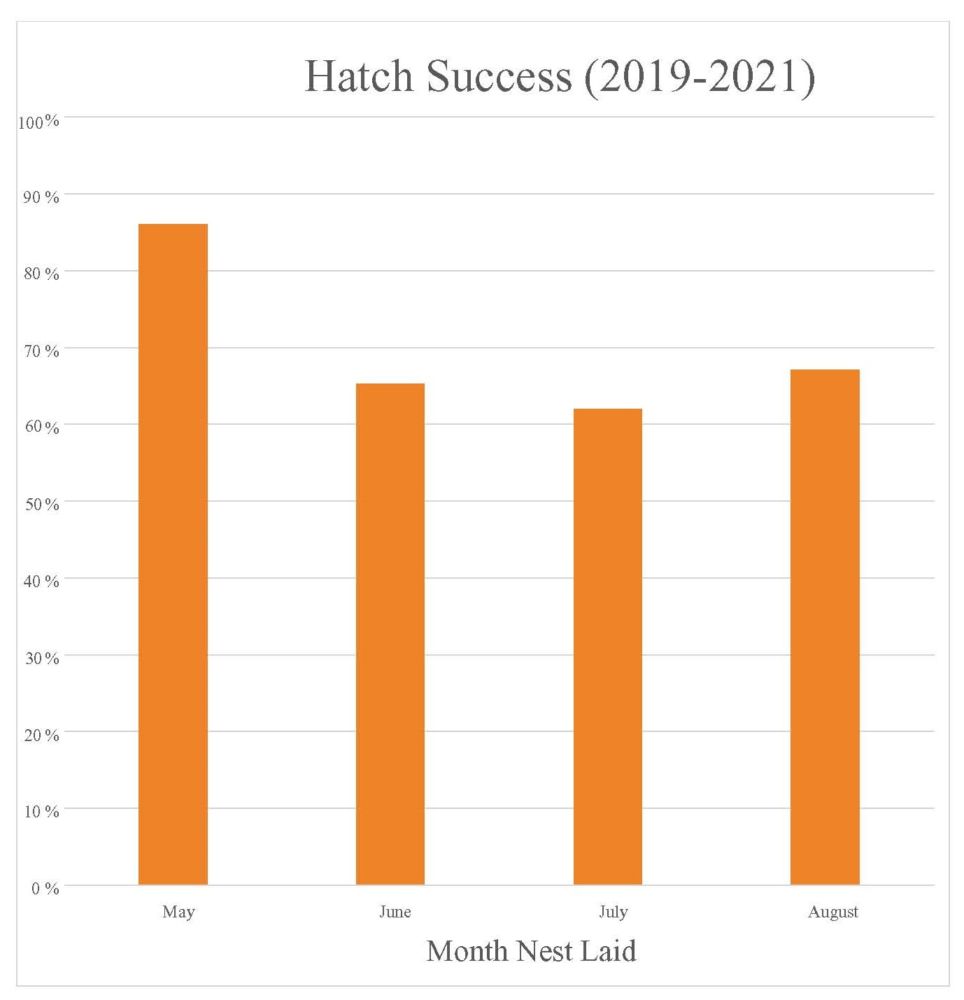
Even more important is the vigor and ability of hatchlings to function to their full potential. Constant nest temperatures at or above 87.8 degrees Fahrenheit produce hatchlings with poor righting response times but normal swimming and crawl speeds. Incubation temperatures at or below a constant 80.6 degrees Fahrenheit produces hatchlings with decreased vigor, poor righting response times, slow crawl speeds, and overall poorer swimming ability. A hatchling needs strength to dig out of the nest, crawl towards the ocean and then spend the next 24-48 hours in a swimming frenzy avoiding predators and striving to reach the Gulf Stream where they mature among large masses of seaweeds.
Temperature dependent sex determination (TSD)
Incubation temperatures are also important because the sex of a sea turtle is determined by the average temperature of the nest during the second trimester of embryonic maturation. This is called temperature-dependent sex determination (TSD) and is common in reptiles. In our area for Loggerhead Sea turtles, the temperature where 50% of the embryos will be male and 50% will be female is around 84.6 degrees Fahrenheit. This is known as the pivotal temperature. A mean temperature of 86.9 degrees Fahrenheit will result in 100% females and a mean temperature of 81.5 degrees Fahrenheit will result in 100% males. Temperatures in between 86.9 and 81.5 will produce a mix of male and female sea turtles. It only takes a small change in temperature of a nest to affect the gender make up of hatchlings (see graph below). As our climate changes and oceans warm, colder northern breeding grounds such as those covered by N.E.S.T. OBX are important to providing sufficient numbers of male hatchlings to sustain and grow overall sea turtle populations.
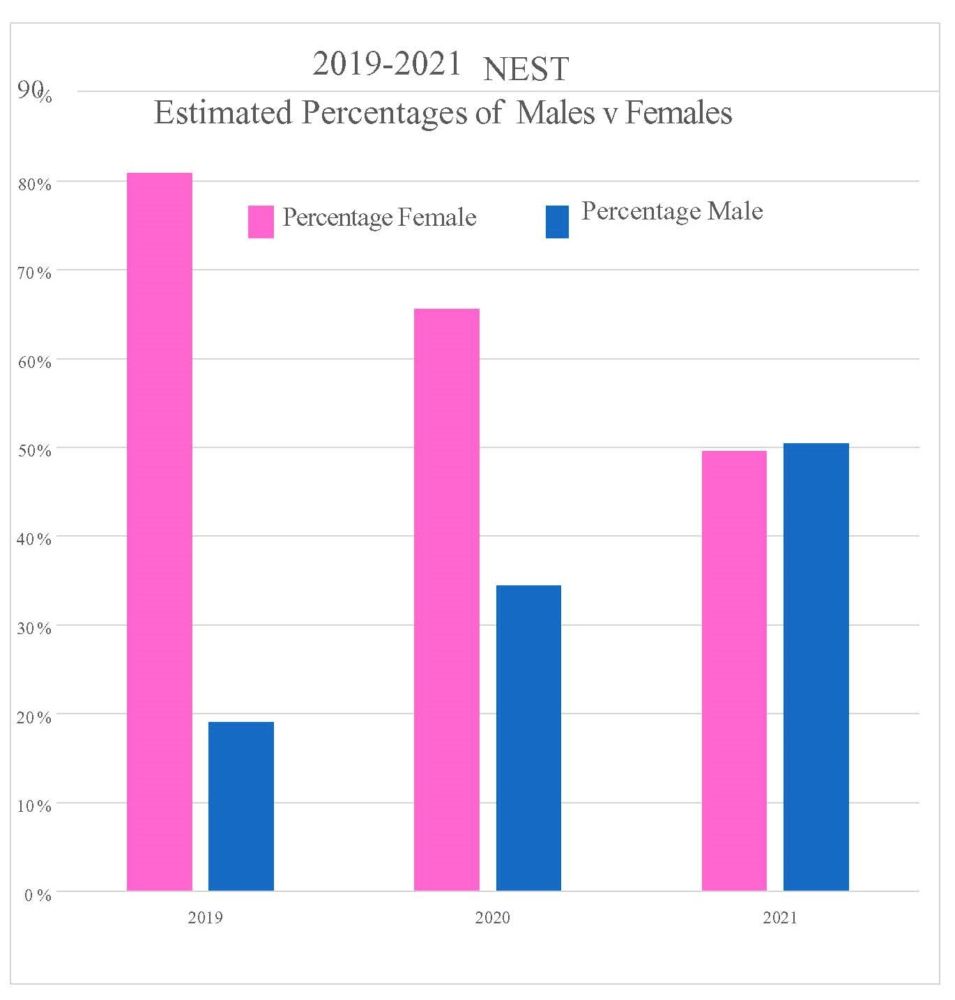
The above graph shows the estimated make up of male/female hatchlings in our Northern Outer Banks nests. We utilized 2nd trimester mean temperature data collected from inside each of our successfully hatched nests of 2019 – 2021 and plotted it using Mrosovsky (1988) model for sex determination. The graph below show the actual numbers of males and females those percentages represent.
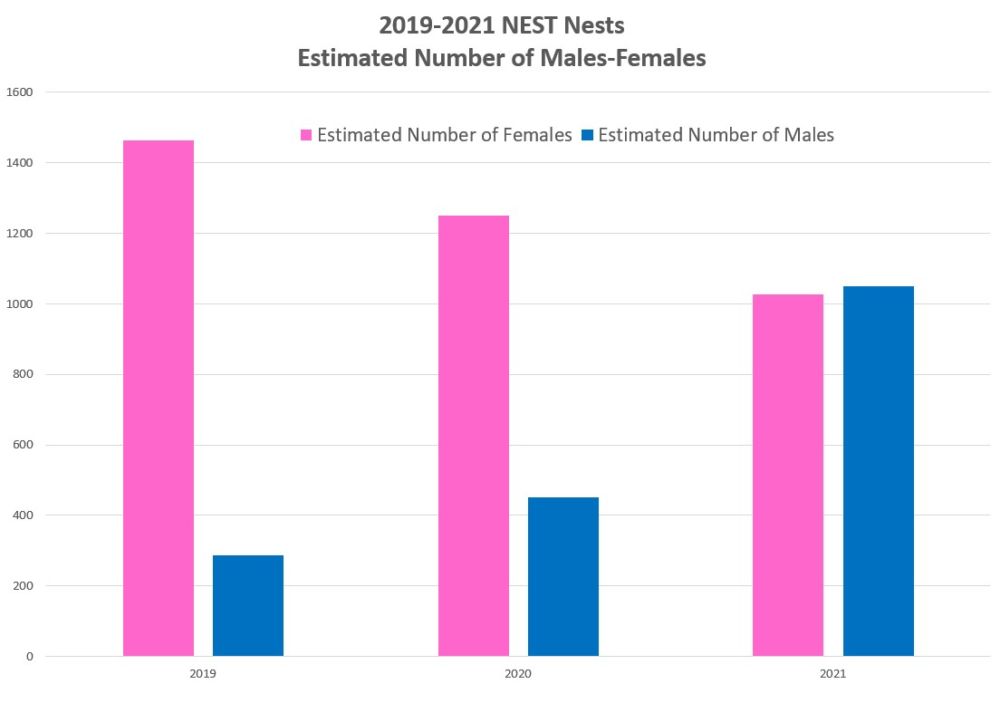
Nest emergence prediction
N.E.S.T. uses multiple tools to help predict when hatchlings might emerge from a nest. One tool has been the research and development of emergence formulas. One of the primary pieces of information in creating these formulas is nest temperature provided by the data loggers. Utilizing these formulas has aided in better nest management by volunteers. For instance, knowing within a couple days when a nest might emerge means volunteers can minimize lighting issues, discouraging predators, educate the beach going public, and reduce volunteer fatigue from monitoring a nest night after night. N.E.S.T continues to fine tune and evaluate these formulas.
**** N.E.S.T.’s work is done under and is in compliance with Endangered Species Act Permit 22ST10 and complies with all NCWRC permit requirements
